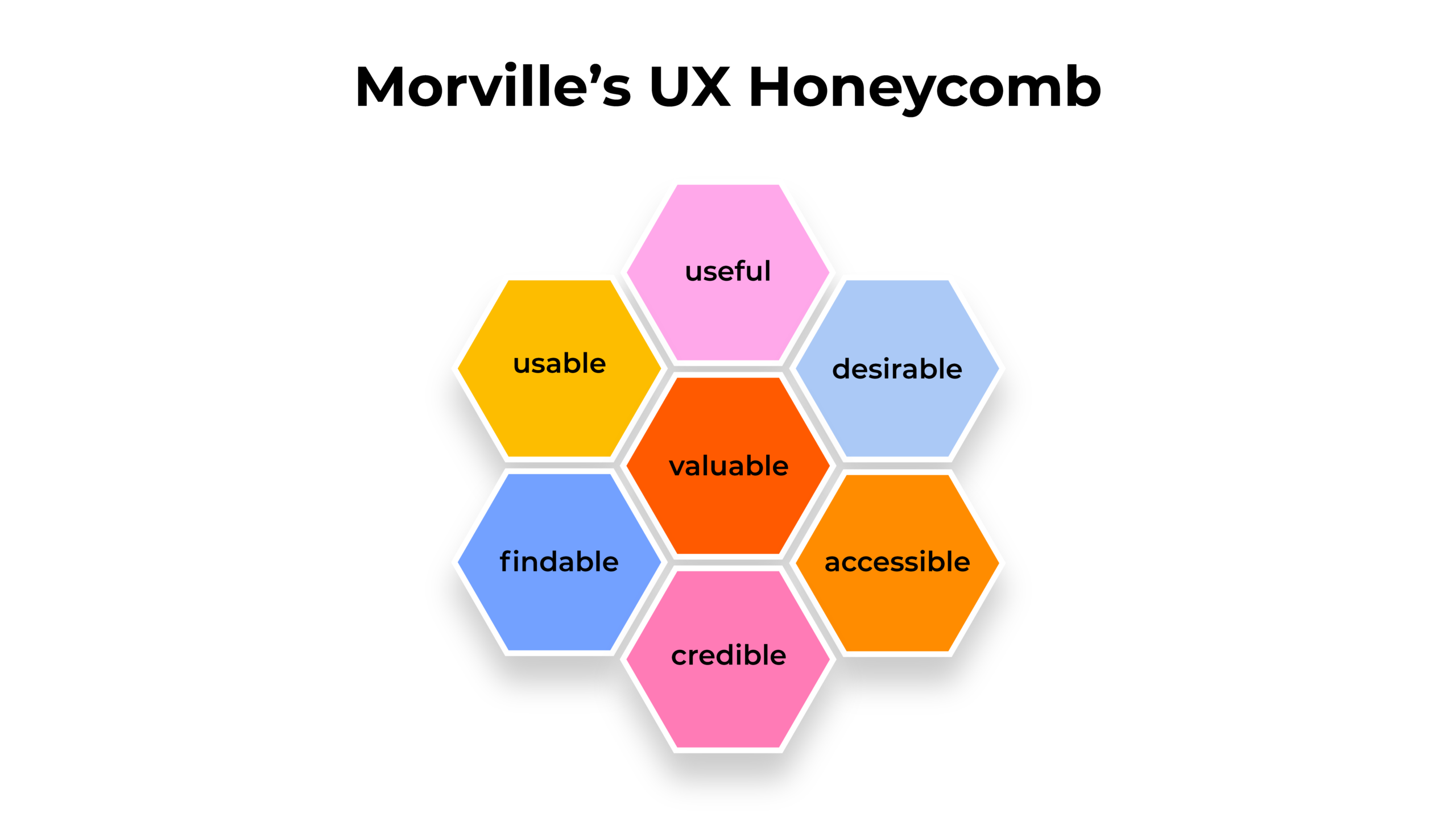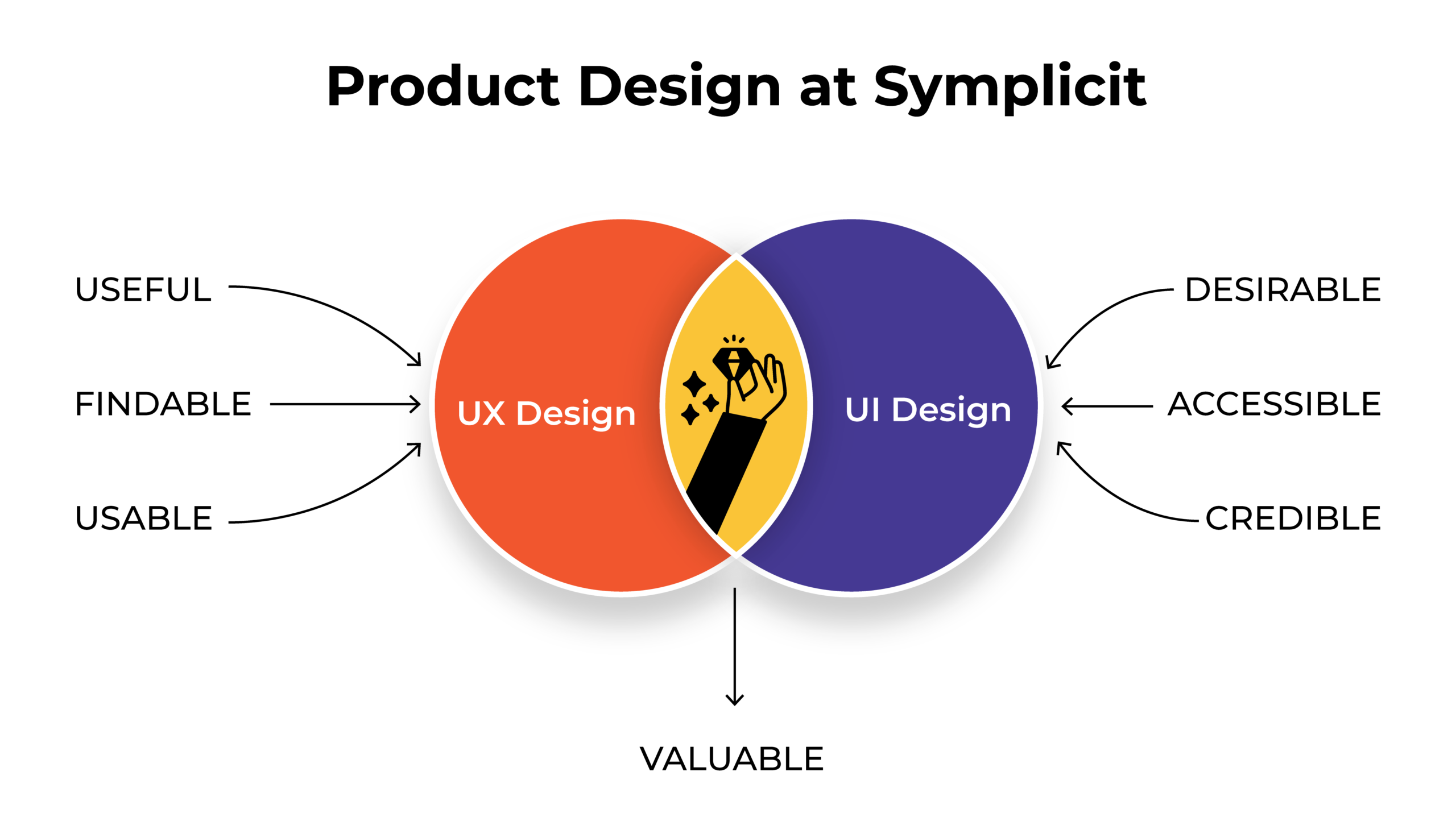
Length
5 min read
What is product design? It’s a question you might find different answers to depending on where you look and whether you are designing a digital or physical product.
At Symplicit, we work primarily in the digital realm, designing software products for our clients. To create clarity within our practice we have adopted a timeless product design definition.
Here’s what it looks like…
Product design at Symplicit.
We see product design as the process of creating valuable products.
- The process blends user needs, business goals and technology constraints.
- The result is products that deliver value – profit and/or positive social outcomes.
- Products are useful, usable, findable, desirable, accessible, and credible.
Our approach is based on the thinking of Peter Morville, who many consider a ‘founding father’ in the fields of information architecture and user experience. Specifically, we draw from Morville’s UX Honeycomb; a methodology developed to help product teams move beyond thinking purely about usability.
Morville wanted organisations to understand the multiple dimensions of successful product design so they could prioritise and resource appropriately. He believed that when every element had been properly investigated, prototyped, and incorporated into a final design the client would have a product that was valuable.

Source: Peter Morville, Semantic Studios | User Experience Design
We’ve taken Morville’s ideas one step further and used them to define our three areas of practice: UX (User Experience) Design, UI (User Interface) Design and Product Design.
Specifically, that means:
- UX designers are primarily responsible for usefulness, usability, and findability.
- UI designers are primarily responsible for desirability, accessibility, and credibility.
- Product designers are responsible for all aspects of creating valuable products.

Source: Symplicit’s Product Design Model Based on Peter Morville’s UX Honeycomb.
Why is this important? This framework allows us to clearly articulate to clients – and to ourselves – why these roles, and associated tasks, matter and how their convergence will lead to a valuable product.
The importance of a shared understanding.
A common misconception of product design is that it’s focused on how a product looks. While the aesthetic or visual appeal is important, it’s just one part of the design process.
In our practice, form follows function.
And that’s where our product design framework comes in. Like a puzzle, we need all the pieces to complete the picture; if one’s missing it’s going to reduce the likelihood that we reach that outcome of having a valuable product.
Let’s take a closer look at what makes a successful product, based on our understanding of what is product design:
Useful: It solves a defined user problem and/or assists with a task.
Findable: It’s simple to navigate, and users can easily find information.
Usable: Users can discover key features and complete tasks with ease.
Desirable: It’s visually appealing and strengthens brand associations.
Accessible: People of all abilities can use the product. This may include culturally and linguistically diverse (CALD) audiences, or those with auditory, cognitive, neurological, physical, speech and/or visual needs.
Credible: It’s credible, and people believe what they see.
What if one of these elements was missing? If we excluded accessibility, a portion of the population would be unable to effectively engage with the product, or worse, be excluded from using it at all. If we forgot findability, people would not be able to find the information they needed and would become frustrated with the product. And on it goes for the rest of the list.
Having a shared understanding means product design teams can clearly articulate what the practice involves and are more likely to convince stakeholders to support the entirety of the process. Importantly, it also gives them a clear understanding of what success looks like, based on a comprehensive product design definition.
Three tips to implement this framework in your product design practice.
- Use it as a diagnostic framework: Start a project by evaluating how your product performs on each of the dimensions.
- Use it to inform the make-up of your design team: Cross-functional design teams create the best outcomes (that is – design the most valuable products). Use this framework to inform the skillset and make-up of your team.
- Use it to evaluate your product design partners: Seek case studies and ask questions about each facet of the framework. Remember, products that adhere to each dimension are more likely to create value for your organisation.
Product design in practice.
Symplicit was founded in 2003 and ever since, we’ve helped Australia’s top companies, government agencies and not-for-profits design valuable products. If you’d like to learn more about our product design practice, or want to discuss a project, you can reach us here.
